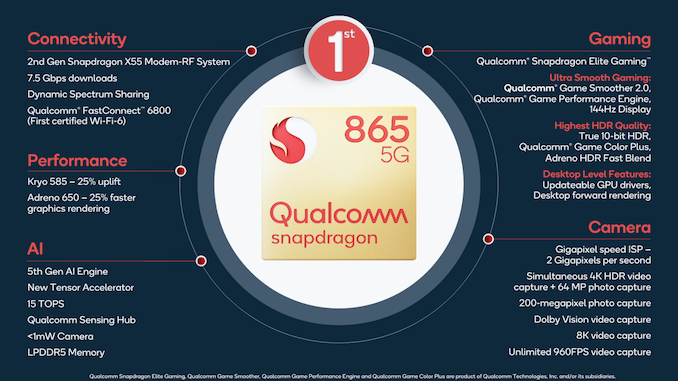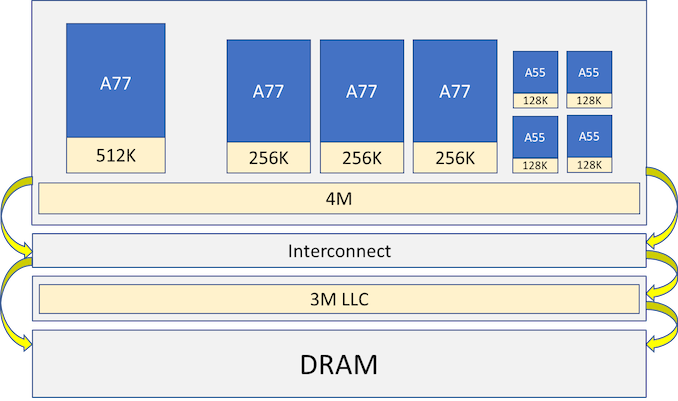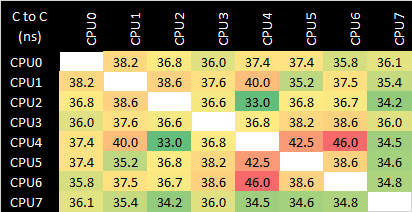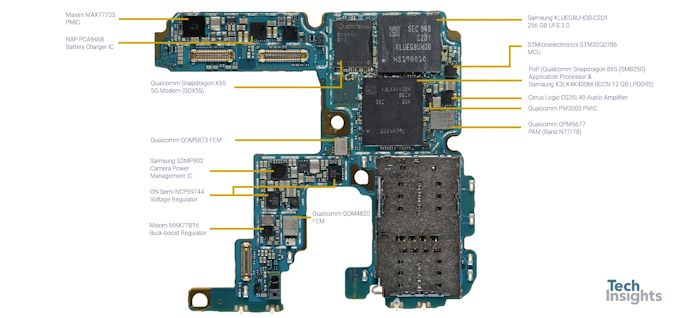The Samsung Galaxy S20+, S20 Ultra Exynos & Snapdragon Review: Megalomania Devices
by Andrei Frumusanu on April 3, 2020 9:30 AM ESTThe Snapdragon 865 SoC: Beating Expectations
We’ve covered the Snapdragon 865 extensively over the last few months, and more recently did a performance preview of the chip on the Galaxy S20 Ultra:
-
Qualcomm Announces Snapdragon 865 and 765(G): 5G For All in 2020, All The Details
-
The Snapdragon 865 Performance Preview: Setting the Stage for Flagship Android 2020
-
Samsung Galaxy S20 Ultra (Snapdragon 865) Quick Performance Preview: Impressive
It’s safe to say that Qualcomm managed to beat our expectations in terms of power efficiency improvements. Which is something we’ll go over in more detail in this piece as well.
At the heart of the Snapdragon 865 we find Arm’s newest Cortex-A77 CPU cores. The new microarchitecture is said to bring a 20-25% IPC improvement over its predecessors, and that’s where the new SoC derives most of its performance improvements from, as the clock frequencies of the cores are identical to that of last year’s Snapdragon 855.
One aspect where Qualcomm did improve the design is in doubling the shared L3 cache of the CPU cluster, going from 2MB to 4MB. Not only does this further improve the performance of the CPUs by allowing for more data to be cached on-chip, but Qualcomm has explained that one of the primary reasons for this was to also improve power efficiency of the SoC by reducing how often the SoC has to access the DRAM, which is a relatively power-expensive operation.
The chip still has a 3MB system level cache that serves the various IP blocks on the SoC – it’s again meant to not only improve performance but also improve power efficiency as it avoids external memory accesses. The memory subsystem here is smart and detects when to bypass this cache when there’s latency-sensitive workloads, and in general we’ll see some massive memory subsystem improvements on the part of the Snapdragon 865 in a later dedicated section.
All the CPUs being in the same cluster and cache hierarchy means that the core-to-core latencies are relatively uniform, only differing based on their frequencies and lower level cache access latencies. It’s not too much of an exciting metric here, but it’s important context to have as we’ll consider the Exynos 990’s CPU topology in just a bit.
Again, we’ve covered the Snapdragon 865 quite extensively in the above linked articles so I recommend reading them again for other details on other parts of the new chip, such as the new ISP, DSP, and GPU details. However, one aspect that’s very defining for the flagship Qualcomm chipset this year is that the company is separating the modem from the SoC – essentially making the SoC just an application processor for this generation.
The external nature of the X55 modem has a few implications: first of all, there’s an additional component on the motherboard which vendors will have to make space for, which means additional cost. Secondly, there’s the big question of how power efficiency will be affected by the external modem. We’ve seen Apple devices perform excellently over the years while never having an integrated modem, and I feel like the Snapdragon 865 and X55 also fall into this classification, as I haven’t seen any major differences in efficiency due to the external nature of the modem.














137 Comments
View All Comments
iSeptimus - Sunday, April 12, 2020 - link
They really don't. 2 years max on updates and the security patches only come out when it is critical after that.My Galaxy Fold only just got One UI 2.1 and Android 10. The most expensive phone they do and they are already slowing down updates for it. Samsung suck at software.
MAGAover9000 - Tuesday, April 7, 2020 - link
Sounds like a positive TBH. I hate some of the updates.Omega215D - Friday, April 3, 2020 - link
That's for the maxed out S20 Ultra, what S10 are you comparing it to? There are the following additions to the S20 lineup: camera tech, 5G, battery capacities, mobile chipsets, display tech, etc. Now not everyone may find those attractive enough to jump on board that doesn't mean they have to buy the damn thing.Threska - Friday, April 3, 2020 - link
5G is probably the biggest push for cost, since 5G phones usually run in the $1,000 range.Andrei Frumusanu - Friday, April 3, 2020 - link
The Galaxy S20 and S20+ 4G variants have the same launch prices as S10 and S10+ - with the only caveat being that they're only available in certain markets, with the US missing from that list.So in that sense, the only thing you're paying extra for is the 5G.
FunBunny2 - Friday, April 3, 2020 - link
"5G phones usually run in the $1,000 range"I still don't get why anyone would pay for "5G". mmWave is barely extant. Verizon, for one, adverts pump up use in football stadiums (if we ever have such), 'so it must be great for you' kind of thing. while sub6 is barely perceptibly different LTE. Why? If there's ever a true build out of mmWave, it'll be in suburban subdivisions with plenty of street lights, no longer the norm. In cities, you'll need some sort of '5G' wifi inside any kind of building with a (massive?) dish on the roof. Ah cannaw change da laws of physic, capn.
shabby - Friday, April 3, 2020 - link
We don't have a choice, Qualcomm is forcing it onto us.s.yu - Friday, April 3, 2020 - link
Qualcomm's going with the flow of the industry, there's no way but forward ;)But anyway, the Luneburg lenses China Mobile showcased, if they're compatible with mmWave, and if they're even willing to sell them(the issue is cost and somehow they're able to make them much cheaper, cheap enough for civilian use), then they could drastically increase coverage at essentially the same power levels.
PeachNCream - Friday, April 3, 2020 - link
Yup, that's a lot to pay for something that you carry around on a daily basis and expose to the outdoor world including weather, impact, and theft. I know the TELCOs are hiding the cost inside monthly payments over the life of a contract so most buyers will not take note of the price over say an $800 dollar handset, but wow people are forking over a lot of their earnings just to carry around a status symbol that other people will stop caring about after a couple of months.FunBunny2 - Friday, April 3, 2020 - link
"wow people are forking over a lot of their earnings just to carry around a status symbol"why does a Ferrari cost 3 times a Ford (not the GT, of course)? because the capital investment to make either is nearly the same, but spread out over a fraction of units. same with "5G" phones. the capital to make all those specialized bits and pieces, whether Samsung made or bought it, is about the same, but separate, from the capital to make a moto G6, etc. but far fewer units. unlike the march to LTE, "5G" is more likely to be a toddler's waddle. with sky high prices as an added benefit.
there was a headline recently that the Swiss watch industry is on a ventilator, few have any need for such bling. can the bling smartphone be far behind? at least your scion can use that Patek Philippe in 50 years.